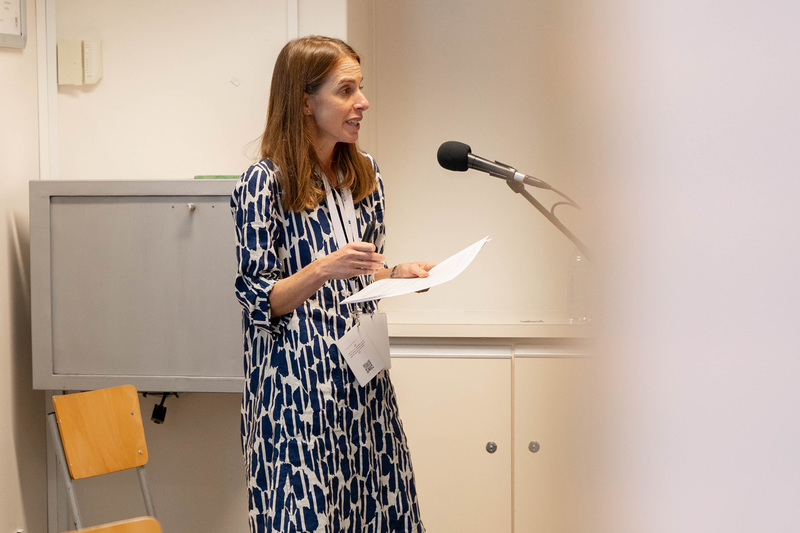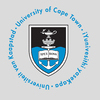The struggle for equity in post-school education 30 years on
04 April 2025 | Story Myolisi Gophe. Photos Roby Walker. Read time 8 min.
South Africa's post-school education and training (PSET) system has undergone significant transformation since the advent of democracy, yet challenges continue to hinder equitable access and effective skills development.
According to a study by University of Cape Town (UCT) scholars Associate Professor Nicola Branson and Dr Emma Whitelaw, successive governments have introduced various policies since 1994. These policies are aimed at expanding access to include previously excluded groups, enhancing mobility within the system, and ensuring alignment with labour market needs. Despite those efforts, gender and race disparities persist.
Professor Branson, a chief researcher at the Southern Africa Labour and Development Research Unit (SALDRU); and Dr Whitelaw, a Carnegie postdoctoral fellow in the same unit, presented their findings at the “South Africa at 30 years of democracy conference”, which was held at the Kramer Law Building from 2 to 4 April.
Hosted by SALDRU, the conference was funded by Agence Française de Développement and the European Commission through the EU–AFD Research Facility on Inequalities, and Economic Research Southern Africa (ERSA). IT was supported by The Presidency, the National Treasury, and the National Planning Commission. It aims to take stock of South Africa’s journey since the dawn of democracy and to point to new pathways to unlock South Africa’s potential in the medium term.
The conference brought together policy makers, business leaders, researchers, civil society, and development partners to evaluate policy performance over the past 30 years across various sectors, engage in policy dialogues on the next five years, and discuss long-term strategic policy directions for the next 30 years.
The PSET sector includes 26 public universities, 50 Technical and Vocational Education and Training (TVET) colleges, 131 private institutions, nine community education and training (CET) institutions, as well as Sector Education and Training Authorities (SETAs).

In her presentation, titled “Post-school education and training policies in South Africa: From 1994 to now”, Branson recalled how the system was disintegrated and fragmented when the democratic government ascended to power, and how a major restructuring process led to mergers that reduced the number of universities from 36 to 23 and TVET colleges from 152 to 50. “One of the biggest shifts was merging institutions to create a more coordinated system. We moved from a fragmented setup to one that aimed for efficiency and accessibility.”
Challenges in attainment and equity
Addressing a session on higher education, Branson noted that despite these and various other interventions over the last three decades, the sector continues to grapple with systemic challenges. While there has been an increase in the number of students achieving bachelor’s passes and entering higher education, many still struggle with the academic demands at the university level. There remains a disconnect between basic education outputs and the preparedness of students for higher learning.
She said demographic disparities persist as well. Although the number of graduates has increased and transformation in terms of race and gender representation has been notable, inequalities remain. When breaking down data by specific subgroups, disparities in staffing by rank and types of qualifications obtained reveal persistent racial and gender inequalities. Moreover, while overall dropout rates have declined, many students fail to complete their qualifications on time, often losing financial aid as a result.

“We have seen progress, but when we disaggregate the data, it becomes clear that racial and gender disparities still exist. For example, when we look at staff appointments or the types of qualifications students obtain, inequities remain.”
While there has been a push to expand vocational training opportunities, the effectiveness of these institutions in preparing students for the job market remains an area of concern. The slow progression of students through university and TVET institutions highlights structural inefficiencies that need to be addressed, the researchers proposed.
Financing higher education: a persistent dilemma
One of the most pressing challenges in the sector is the financing of higher education. South Africa has seen a rapid expansion in student funding through the National Student Financial Aid Scheme (NSFAS). However, this has come at the expense of institutional funding, creating a trade-off that affects the quality of education and resources available to students.
“We’ve seen an enormous increase in student funding, but this has placed a strain on institutional budgets. We need to ask: How do we balance access with quality?”
“Graduates are still in a better position than those without higher education.”
While NSFAS has enabled thousands of students to access tertiary education, the funding model has limitations, particularly in cases where students take longer than the prescribed time to complete their qualifications. The financial sustainability of this model remains a major policy debate, as institutions struggle to balance access with maintaining quality education standards.
Qualification attainment and labour market outcomes
Despite an increase in the number of qualifications awarded, South Africa has not seen significant improvement in the overall share of the population holding tertiary qualifications. Racial gaps in qualification attainment have widened over time. While more individuals are attaining certificates and diplomas, the proportion of those holding degrees or higher qualifications remains relatively stagnant, far from the targets set in the National Development Plan (NDP).
“When we look at population shares, the qualification gains haven’t been as substantial as we hoped. Racial gaps in higher education attainment have widened, rather than closed,” Branson observed.
Labour market outcomes reflect these disparities. While graduates are more protected from unemployment compared to those without tertiary qualifications, recent trends show a worrying increase in graduate unemployment rates. However, those who do secure jobs tend to see significant earnings growth over time, indicating that the return on investment in higher education remains substantial.
“Graduates are still in a better position than those without higher education. But the rise in graduate unemployment is concerning, especially for diploma holders.”
Time to pause and reflect
Given the complexity of the challenges facing the PSET sector, the question arises: Should policy makers continue implementing new reforms, or should there be a period of consolidation to refine existing policies? The discussion highlighted the need for a more thoughtful approach to balancing access with quality, aligning education with labour market demands, and ensuring that funding models remain sustainable.
Key considerations include:
- The importance of aligning skills training with labour market needs to ensure that graduates can secure meaningful employment.
- The trade-offs involved in funding mechanisms and how they impact both students and institutions.
- The ongoing need to address disparities in attainment and employment outcomes across different demographic groups.
“We need to think carefully about whether we keep implementing new reforms or pause to ensure existing ones are effective. There’s a balance between policy implementation and giving the system time to adapt.”
The pair’s findings were widely welcomed as reflecting a true picture of the situation and sparked vibrant discussions from members of the audience who proposed various solutions.
Thabo Mabogoane, from the Department of Planning, Monitoring and Evaluation, questioned industry complaints about skills mismatches, arguing that employers also bear responsibility for providing training opportunities. He said there was a need to improve epistemological access, address rural students’ barriers, and ensure funding is used effectively to justify continued investment in post-school education.
Mamphokhu Khuluvhe, from the Department of Higher Education and Training, noted that more women are enrolled at institutions of higher education than men, but women earn less than men and there are more men employed than women. “While university participation has increased, it remains low compared to global standards, and male disengagement from higher education is a growing concern.”
 This work is licensed under a Creative Commons Attribution-NoDerivatives 4.0 International License.
This work is licensed under a Creative Commons Attribution-NoDerivatives 4.0 International License.
Please view the republishing articles page for more information.










